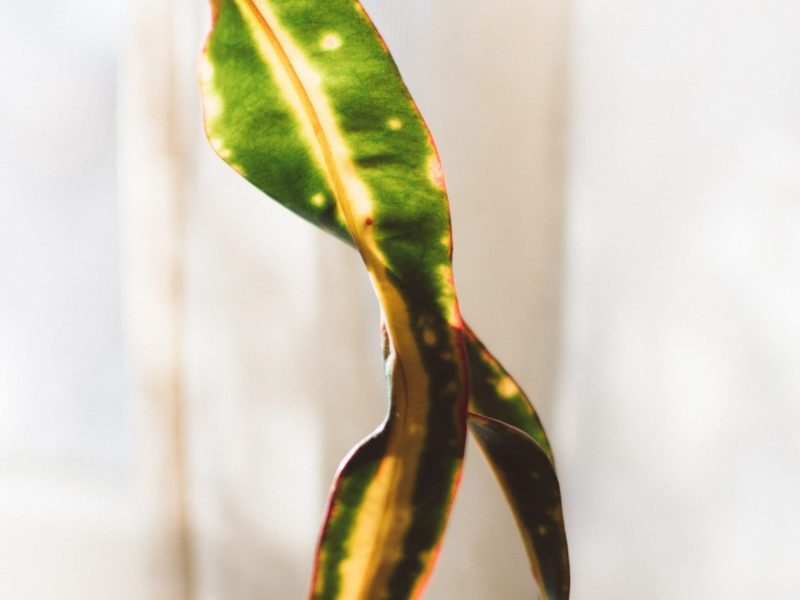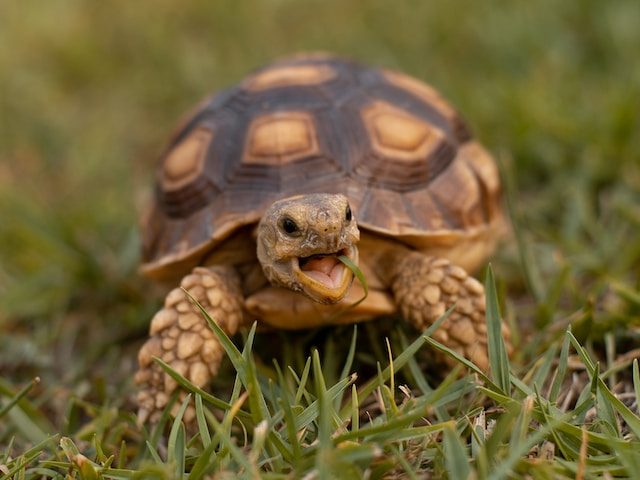
The main reasons houseplants leaves turn yellow:
There’s nothing worse than getting home and finding one of your houseplants’ leaves has started turning yellow. We’ve always wondered why it happens so we did the research and curated a list of things to check before you start getting worried. Houseplant leaves can turn yellow for a variety of reasons such as; nutrient deficiency, watering problems, too little light or even just plain old ageing.
Watering issues can cause yellow leaves
As with a lot of things in the houseplant world, proper watering is an integral part of the puzzle. You should start off by looking into if you’re over or under-watering the plant that has started showing signs of yellowing leaves. One of the simplest ways to do this is the finger rule. Press one of your fingers around 1″ into the soil. If the soil is completely dry then you’re under-watering. If it’s super soggy, then you might be giving it a little too much water.
We’ve always gone for a little and often view towards watering, but really it’s good to get to know what your plants like most. We’d recommend picking up your plants when they’re in need of watering and after you’ve watered them, this way you get a feel for when your plants might need a little more simply by giving them a little lift. This will really help you get a better watering routine and prevent more yellow leaves on your plants.
Yellow houseplant leaves can indicate nutrient deficiencies
Some yellowing can occur in leaves because of nutrient issues, too much or too little as always! It’s a safe bet to swap out some of the soil in the pot (that isn’t filled with roots) with a good rich potting mix or compost.
From there it’s good to consider the water you’re giving to your plants, if you’re from an area with particularly hard water your plants could be getting too much calcium. It’s rare that this causes any real issues such as yellow leaves, but if you’re concerned make sure to replace your soil a little bit more often as calcium toxicity can reduce the uptake of other nutrients.
Improper lighting can also cause yellow leaves
A tell tale sign that lighting is causing the yellowing is that the leaves will change colour and then drop from the plant, luckily it’s an easy one to fix. Your plant will just need a little more light, so move them to a brighter location for a little while and see if that solves the problem of yellow leaves.
Finding the perfectly lit spot for your plant can be tricky but remember the three simple rules. Plants labeled with needing bright light should be seeing the sun for most of the day, a south or west facing window will suit just fine. Indirect light is just a touch further inside a bright room, potentially an east facing window if there’s a spot free. Low light is most other places in your home and even most of the indirect areas in winter, if you find it hard to read in the spot it’s likely to be low light.
Yellow leaves can be a sign of natural ageing
One reason for yellowing leaves that we can’t put aside is simply that your plant is getting older. If the issues are towards the bottom of the plant then it’s not too much of a concern to the overall health, it’s just growing up and losing some of its older leaves to grow new, fresh ones.
It could be worth looking into how you can trim your plant to encourage new growth and reduce the chance of it growing stragely leggy in future.
Root crowding can sometimes cause yellow leaves
With the possibility of causing multiple other issues, root crowding is worth checking every so often as it can lead to some yellow leaves. Let your plant dry out for a couple of days after watering and then gently lift it from it’s pot, if all you can see are roots then it seems like crowding could be the source of the problem. Grab a bigger pot, some more nutrient rich soil and gently dig through the roots with a chopstick to separate them out a little before repotting your plant with a little bit more room to grow.
Pests are a more worrying cause of yellow leaves
If the yellowing is not so consistent on the leaves and showing up slightly blotchy then pests could be the problem. Take a quick look over the plant for any unwanted insects, the most likely case is spider mites — the best technique for removing them that we’ve found is taking your plant for a shower. Just pop them in the shower, rinse down the leaves and stems with water and let them dry off, after a few of these the spider mites should be gone for good.
You might also want to treat your plant with an insecticide if you’re having trouble getting rid of them as this can help prevent yellow leaves.
Viral infection is a rarer cause of yellow leaves
Infection is the worst and rarest case scenario. If your plant has any deformation in the leaves, branches or stems, it’s likely infected. Unfortunately there’s no good treatment in this situation and it’s best to get rid of the plant as soon as possible as they can infect others around them.
Never reuse any of the soil used on this plant as it can cause the infection to spread and more yellow leaves to develop on other plants. It’s also a good idea to clean any tools used on this plant.
Cold drafts can cause yellow leaves to develop
If the plant in question is a more tropical species it’s worth checking if there’s any notable temperature problems, especially any cold drafts that are causing the yellow leaves. If that’s the case then it’s definitely time to have a bit of move around and get it into a more consistently warm, temperate area. Make sure to double check the area if you have any air conditioners running as that will shift the air flow in your room.
Most of the time leaves will go from yellow to brown and then drop if temperature is the core issue.
So there’s quite an array of reasons that your houseplants could be developing yellow leaves, but the most important things come down to getting the basics right. Having your plant in the correct location for good lighting, making sure it has the right amount of water and keeping up with routine maintenance of soil changes and feeding.














